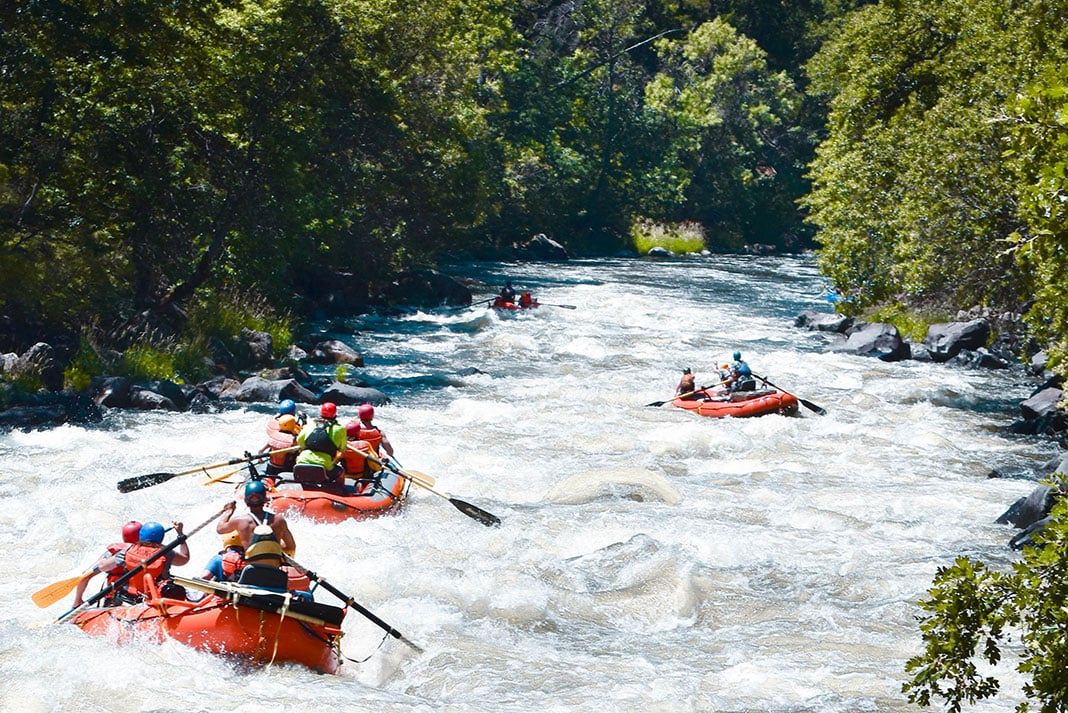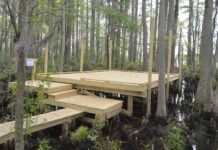North Carolina and Tennessee have absorbed the brunt of widespread damage from Hurricane Helene. News coverage and social media have shared the destruction around the city of Asheville, and towns in the Southern Appalachians, especially river communities, which have been devastated by the storm’s impact.
Throughout both rural Western North Carolina and Eastern Tennessee, we are still learning the magnitude of the hurricane’s destruction to life, property and infrastructure—witnessing a place forever altered.
Paddling community launches into rescue and recovery following the wake of Helene
In the wake of the storm on Saturday, September 28, Mason Hargrove and Dane Jackson went to Big Hungry Creek and down the Green River Narrows in order to access Green River Cove Road near Saluda, NC, a community hard hit by the storm and cut off from conventional access.
“As soon as we got past the last rapid we started seeing cars and RVs and houses stacked on top of each other, and 40-foot tall wood stacks,” Hargrove said. “I think that was the moment it finally hit me how hard these people got hit and how much this is going to take to get back to semi-normal. I think it’s going to be a lot longer than a lot of people realize.”
“We both had 25 cans of non-perishable food in drybags. We paddled the Narrows but mostly just hiked everything—we’re not here for the kayaking. We’re here to check on the people. With the landslides that had happened and how high the river got here, it was a completely different river,” said Hargrove.
Officials do not endorse entering the landscape the way the paddlers did. They are asking people not to self-deploy into affected areas. Instead, within the region, you can call 2-1-1 to connect with community services, and there are numerous ways to volunteer, including paddler-organized recovery efforts.
How Helene became a catastrophic flooding event
At nearly 300 miles from the nearest coast, the mountains of North Carolina and East Tennessee were not likely suspects for severe hurricane damage. However, the heavy winds and rains of Hurricane Helene combined with a cold front in the region that had already left the rivers high before the storm even hit. The rainfall combined with the mountain terrain itself amplified the effect, resulting in historic flooding and never-before-recorded river levels.
On Wednesday, September 25, Hurricane Helene was a Category 1 storm, just over a day away from its eventual landfall as a Category 4 storm on September 26. Hours later in the Southern Appalachians, the storm brought catastrophic winds and rains, with the highest rain total in Busick, North Carolina, reaching 31.33 inches over three days.
Most communities in the region are in valleys along rivers; pairing this with steep slopes and shallow soil created a worst-case scenario for flooding, NOAA Climatic Data Center Chief of the Scientific Services Division David Easterling told USA Today.
The French Broad River in Asheville reached a water level of 24.67 feet—the highest flood stage observed in Asheville since measurements began in 1895. Downstream, the mountain communities of Marshall and Hot Springs were run through.
In the scenic town of Chimney Rock, North Carolina, the Broad River gauges do not appear to reflect what occurred, but close by, the small tributary Cove Creek showed a water level higher than 24 feet on September 27, before recorded measurements ceased. It measured just two feet before the flooding. Reports indicate Chimney Rock has been heavily swept away in the flood waters.
There are already 175 confirmed deaths in total from Hurricane Helene and search operations continue. Throughout the region, hundreds of thousands of people remain without power, without gas, limited access to clean drinking water and isolated due to damage to roadways.
While small river towns are among the hardest hit, the communities have quickly banded together to initiate recovery.
River community-led rescue and recovery efforts
According to a statement online, the Nantahala Outdoor Center in Bryson City, North Carolina, is largely intact after the storm and has been offering the local community a place for a hot meal and to charge electronics. In addition, the Nantahala Outdoor Center wrote on Tuesday that it is serving as a local relief donation drop-off point to collect and deliver supplies directly to those impacted by Hurricane Helene.
“We have partners reaching out like Astral with vans to help transport supplies and have 200 blankets going to Asheville and Hendersonville today [October 2], and 50+ cases of water coming today or tomorrow and lots of other partners willing to help,” the Nantahala Outdoor Center shared.
“Our goal is to survey the need and take it to our river communities like Hartford, Hot Springs and Asheville areas for now. Our Hot Springs river guides lost everything as our staff housing was a total loss, but they are okay.”
In Erwin, Tennessee, Pyranha Kayaks shared that while everyone at Pyranha is safe, the town is still in shock, with hundreds missing and infrastructure destroyed. They’ve also set up a community-focused aid campaign.
In Saluda, North Carolina, Green Riverkeeper at MountainTrue, an Environmental Conservation Organization committed to protecting the Blue Ridge and Western North Carolina, is accepting and distributing supplies.
After paddling into Green River Cove on the 28th with supplies, Hargrove and Jackson shared a video on social media, hoping the video would shed some light on the destruction in small communities and help rally aid for these communities.
“I think kayakers are really resilient people and it’s all one big family. We’re going to take care of each other,” Hargrove said. “Obviously, the Green has a special place in a lot of people’s hearts, so to see that video and to see that community hurting and so many people, kayakers, came together and they evacuated around 28 to 30 people.”
Since Saturday, Hargrove and Jackson have made several trips into the Gorge on foot carrying hundreds of pounds of supplies for the people who remain.
“Don’t forget small towns,” Hargrove urged. ”The smaller towns are so remote, they don’t have Wi-Fi, or even power or water.”
Additional resources on recovery efforts
You can find official information on North Carolina and Tennessee’s sites, as well as through FEMA.
Multiple open-source documents have also been created to access aid resources in Western North Carolina and learn how to help, including this Helene Response and Rebuild WNC Resource List and Helene Recovery Resources.
Featured Image: Mason Hargrove | Facebook









